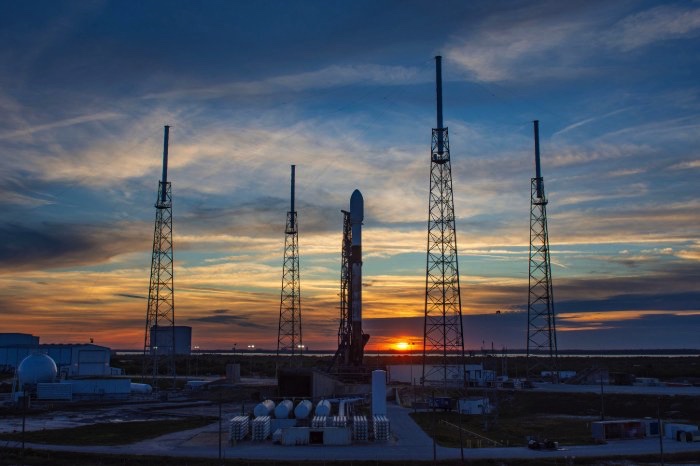
SpaceX has won an $80 million contract to launch a NASA environmental research satellite aboard a Falcon 9 rocket from Cape Canaveral in late 2022 to collect data on ocean ecosystems and clouds, a mission that the Trump administration wished to cancel.
The White House proposed terminating the Plankton, Aerosol, Cloud and ocean Ecosystem, or PACE, mission — and other Earth science projects — in the Trump administration’s first three budget proposals. But Congress restored funding on all three occasions, including in the fiscal year 2020 budget passed by lawmakers and signed into law by President Trump in December.
NASA is now moving ahead with development of the PACE mission.
“PACE will help scientists investigate the diversity of organisms fueling marine food webs and the U.S. economy, and deliver advanced data products to reduce uncertainties in global climate models and improve our interdisciplinary understanding of the Earth system,” NASA said in a statement.
“It will also continue systematic records of key atmospheric variables associated with air quality and Earth’s climate,” officials wrote on the PACE mission’s website.
NASA announced Tuesday the selection of SpaceX to launch the PACE satellite on a Falcon 9 rocket in December 2022. The total cost for NASA to launch PACE is $80.4 million, including the launch service and other mission related costs, according to the space agency.
“SpaceX is honored to continue supporting NASA’s critical scientific observational missions by launching PACE, which will help humanity better understand, protect, and preserve our planet,” said Gwynne Shotwell, SpaceX’s president and chief operating officer.
The mission will launch from Cape Canaveral Air Force Station in Florida, NASA said. According to SpaceX, the Falcon 9 rocket slated to launch PACE will use a previously-flown first stage booster.
PACE will fly in a polar sun-synchronous orbit 420 miles (676 kilometers) above Earth, requiring the Falcon 9 to fly toward the south from Florida’s Space Coast after an initial trajectory to carry the rocket offshore.
The southerly polar launch corridor from Cape Canaveral has not been used since 1960 because it requires rockets to fly over Cuba and other downrange countries, rather than having a clear shot to ascend into orbit east over the Atlantic Ocean.
SpaceX is moving some of its missions going into polar orbit from Vandenberg Air Force Base in California, which has typically been used for polar satellite launches, to Cape Canaveral. The first polar orbit launch from Florida since 1960 is scheduled for late March, when Argentina’s SAOCOM 1B radar observation payload will take off from Cape Canaveral, not from Vandenberg as originally planned.
A SpaceX launch in November carrying the U.S.-European Sentinel 6A oceanography satellite remains scheduled to take off from Vandenberg, according to NASA officials.
The PACE satellite will have a launch weight of around 3,748 pounds (1,700 kilograms), and will carry an ocean color imager and two polarimeter instruments. The mission is managed by NASA’s Goddard Space Flight Center, where the spacecraft will be manufactured, and the Netherlands is an international contributor the PACE project.
The PACE mission has a cost cap of $805 million.





























